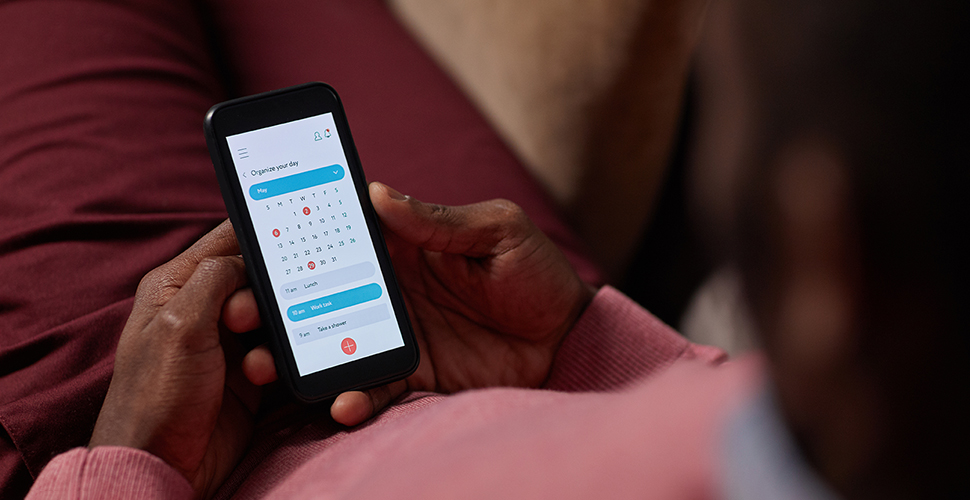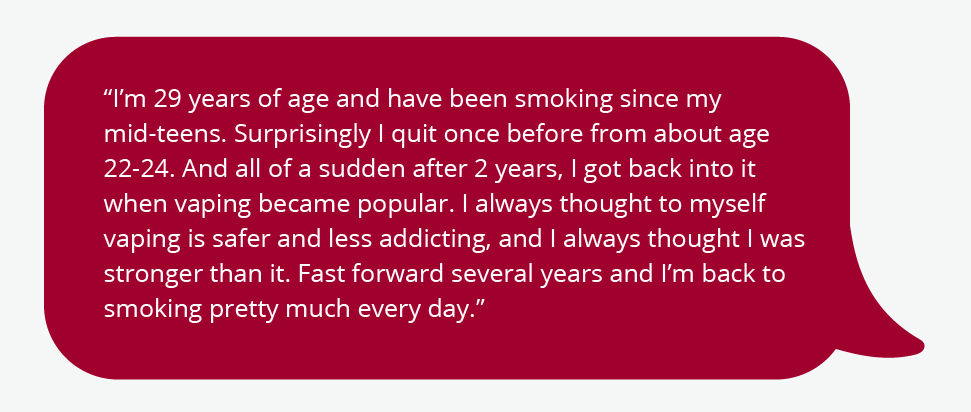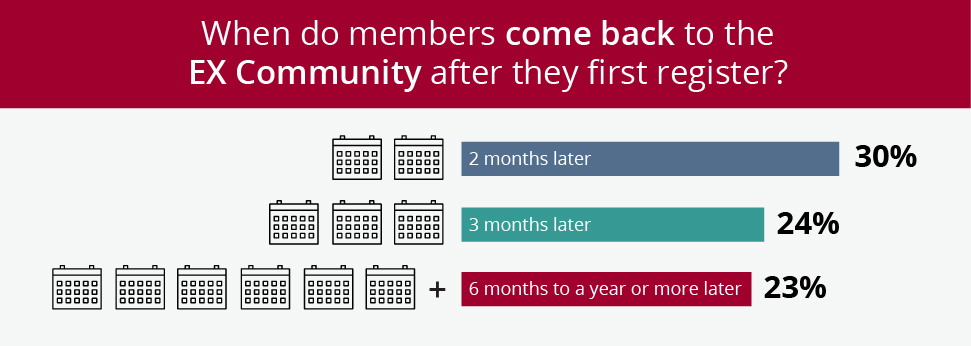From start to finish, how long does it take to quit smoking successfully? There’s a range of advice from experts about how long you need to develop a new behavior. But with tobacco addiction, those estimates don’t apply.
Here’s why.
There’s no standard for being “quit”
If you quit your job, you don’t work there anymore. If you quit a relationship, you no longer go on dates together. But quitting tobacco isn’t like that, because even if you have a “quit date,” that only means it’s the day you plan to stop. How long does it take after that to consider yourself successful? A week, a month, a year?
Some tobacco cessation programs report what’s called the “6-month, 30-day quit rate,” which means the percentage of users who haven’t smoked at all in the past 30 days when they’re asked 6 months after their quit date. Others report a “3-month, 30-day quit rate.”
And even after quitting, abstaining can still be difficult. Stress or other triggers can still entice someone to want to smoke. This excerpt from our online EX Community is one of many posts that show the lasting grip that tobacco can have:
This is not “a habit”
Although tobacco use is often called a habit, there’s a big difference between a real habit that could provide healthy benefits—such as not scrolling social media before bed or choosing salad instead of fries as a side dish—and tobacco, which is an addiction. Habits can be tweaked and changed through repetition and a moderate amount of willpower.
Addictions, however, are far more powerful and can lead people toward behavior they hate, and into outcomes they dread. No one stands outside in sub-zero temps in a frigid wind to smoke, then tries to cover their smelly clothing and bad breath, while struggling to take a deep breath, because it’s just “a habit.”
Using nicotine actually changes the structure of your brain, which means your brain literally works against you when you try to stop using it. Because this addiction is so strong, it can take numerous attempts to quit. A study has shown for many tobacco users, it takes an average of 6 or more quit attempts before they can sustain a long-term quit.
Everyone’s journey is unique
When it comes to quitting tobacco successfully, there are challenges and factors unique to each person. This includes family history, reasons for using tobacco, triggers, communication preferences, and willingness to try quit medication. All of that, and more, comes together in a quit journey.
That’s why the EX Program doesn’t have an end date or a designation that participants “complete” our program. We do have a designated number of steps that tobacco users are typically required to do to be eligible for employer-provided incentives. These steps lead participants through different program components proven to help tobacco users quit.
The components of the EX Program address the behavioral, social, and physical aspects of tobacco addiction. And through these digital tools and professional support, those who follow the EX plan quadruple their chances of quitting.
Support needs to be ongoing
Data from the EX Community—our online community of current and former tobacco users—shows that 30% of members come back 2 months after they first register on the site. About 24% come back 3 months later, and 23% come back 6 months to a year or more after they first register.
One EX Community member said that even after she’d been quit for 30 days, she wondered if she’d ever feel comfortable in her own skin again. She continues to struggle through insomnia, mood swings, and horrendous cravings.
Before her current quit, she had quit … and failed … half a dozen times, but she’s trying again because, she wrote, “It takes time to relearn life without the smokes but it’s worth anything and everything to be free.”
Even when people say they’ve quit, they still need access to a program year-round, with resources that support their continued journey of living free from tobacco.
All of that is why the EX Program offers an evidence-based approach that places tobacco users in the driver’s seat of their quit, to engage in ways that work best for them and fit with what they need when they need it.
To learn more about how the EX Program works to engage employees and health plan members in quitting, schedule a demo with us today!
For more information on how to support individuals on quitting tobacco, see our blogs Why Don’t People Just Stop Smoking? and How Communicating with Empathy Drives Smoking Cessation Outcomes.







